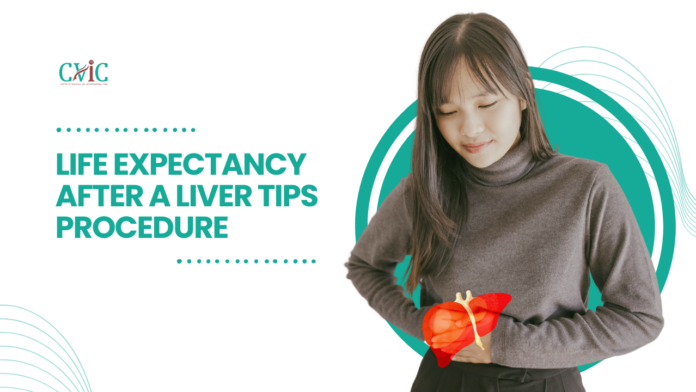Life Expectancy After a Liver TIPS Procedure
The Transjugular Intrahepatic Portosystemic Shunt (TIPS) procedure is a critical intervention for patients suffering from severe liver diseases, particularly those with complications like variceal bleeding and ascites. This article delves into the life expectancy following a TIPS procedure, examining factors that influence survival rates, challenges patients might face, and strategies to optimize health post-procedure.
Understanding the TIPS Procedure
What is TIPS?
TIPS is a minimally invasive procedure that creates a channel within the liver to connect an inflow portal vein to an outflow hepatic vein. This shunt is designed to reduce high blood pressure in the portal vein, a common complication in cirrhosis and other liver diseases.

Factors Influencing Life Expectancy After TIPS
Severity of Liver Disease
- Baseline Condition: The initial health of the liver and the stage of liver disease play crucial roles in determining life expectancy. Patients with less advanced liver disease typically experience better outcomes.
Presence of Other Medical Conditions
- Co-existing Health Issues: Conditions such as diabetes, heart disease, and others can complicate recovery and negatively impact survival rates.
Survival Rates: Statistical Overview
Short-term and Long-term Survival
- Initial Recovery: Studies show varied survival rates post-TIPS, with some reporting one-year survival rates around 70-80%.
- Long-term Outlook: The five-year survival rates can decrease, largely depending on the progression of the underlying liver condition.
Challenges After a TIPS Procedure
Potential Complications
- Hepatic Encephalopathy: One of the more common complications following a TIPS procedure is hepatic encephalopathy, a condition that affects brain function and can be triggered by the shunt.
Monitoring and Management
- Regular Follow-ups: Monitoring liver function and the effectiveness of the shunt through regular medical check-ups is essential to manage any arising complications.

Improving Life Expectancy Post-TIPS
Medical Management
- Medication: Utilizing medications to manage symptoms and complications, such as diuretics for ascites and lactulose or rifaximin for hepatic encephalopathy, is crucial.
Lifestyle Adjustments
- Diet and Exercise: Adapting a healthier lifestyle post-procedure can significantly impact the quality of life and longevity. This includes adhering to a low-sodium diet and avoiding alcohol.
Patient Stories and Real-World Experiences
Testimonials
- Case Studies: Sharing experiences of patients who have undergone TIPS can provide insights into the real-world effects of the procedure on life expectancy and daily living.
Advancements in TIPS Technology
Innovations in Procedure
- Recent Developments: Ongoing research and advancements in medical technology continue to improve the safety and efficacy of TIPS procedures, potentially enhancing patient outcomes over time.

Conclusion
Life expectancy after a liver TIPS procedure is influenced by various factors including the severity of underlying liver disease, the patient’s overall health, and how well the procedure and its aftereffects are managed. While TIPS is not a cure for liver disease, it is a significant step in managing symptoms and improving quality of life. With appropriate medical care and lifestyle adjustments, patients can optimize their health outcomes and lead a more comfortable life post-TIPS.
Our Doctors
Dedicated IR Center for Vascular Problems in Madhya Pradesh
DR. SHAILESH GUPTA
MD, PDCC (INTERVENTIONAL RADIOLOGY) Consultant & Co-Director CVIC (Center Of Vascular & Interventional Care)
DR. ALOK KUMAR UDIYA
MD Radiology, PDCC (Neurointervention Radiology), PDCC ( HPB Intervention Radiology) FINR (Switzerland) & EBIR
Endovascular Surgeon & Consultant Interventional Neuroradiologist at Care CHL Hospital, Indore Co-director CVIC( center for vascular and interventional care)
DR. NISHANT BHARGAVA
Consultant Intervention Radiologist
MD Radiology, PDCC ( Neurointervention Radiology), FINR ( Fellowship in Neurointervention Radiology)
Co-director CVIC(Center for Vascular and Interventional Care)
Contact Details
Phone no.
0731 4675670
+91 9827760073
Facebook
https://www.facebook.com/profile.php?id=100092538633553&mibextid=ZbWKwL
Instagram
https://instagram.com/cvic_center?igshid=ZGUzMzM3NWJiOQ==
Google My business
https://g.co/kgs/DrdV3T
YouTube
https://www.youtube.com/channel/UCP5TH5e4iQZkpDUgnLsgZhw
Pinterest
https://pin.it/5DzpX5Z
Twitter
https://x.com/cviccenter?t=01TclSrLFdu0K2re0Gs96w&s=08
LINKEDIN
https://www.linkedin.com/company/center-of-vascular-interventional-care/
Location –
Read More –
Thrombolysis: Definition, Types, Uses, Effects, and More – https://cvicvascular.com/thrombolysis/
Unlocking the Secrets: 10 Proven Strategies for DVT Management and Successful Venous Stenting – https://cvicvascular.com/dvt-management-and-venous-stenting/
Navigating Cancer Treatment: Understanding Transarterial Chemoembolization (TACE) – https://cvicvascular.com/navigating-cancer-treatment-tace/




